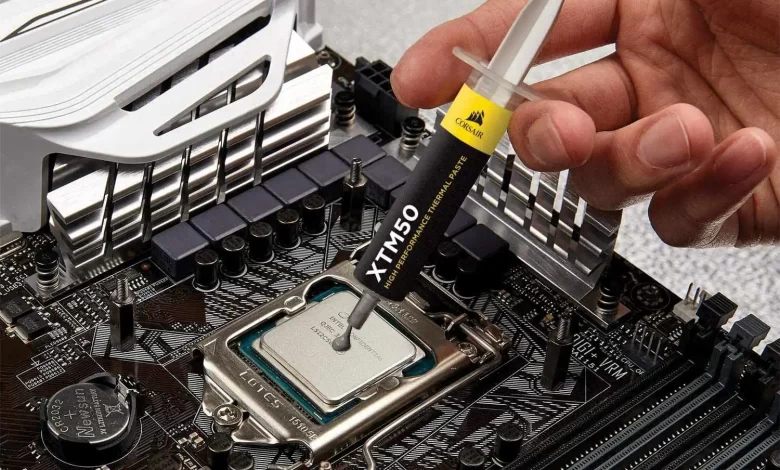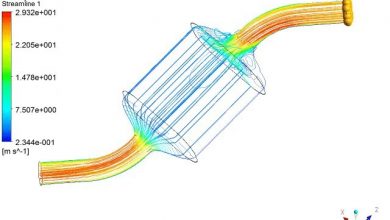How to Clean Thermal Paste Off CPU

If you’ve ever built a PC, you know that thermal paste is essential for keeping your CPU cool. But what happens when you need to remove it? In this article, we’ll show you how to clean thermal paste off CPU.
Best thermal paste is a substance that helps to conduct heat away from sensitive components. It is often used between a computer’s CPU and heatsink and can be made of various materials such as metal or ceramic. It can degrade over time, so it may need to be replaced periodically to ensure optimal cooling performance.
Its function is to fill any gaps between the heating element and the heat sink, which prevents overheating. However, the thermal paste can become dry, cracked, and difficult to remove over time. Here are some tips on how to clean thermal paste off your CPU.
Removing thermal paste can be tricky, whether you’re replacing your old thermal paste or just cleaning up a messy build. But with a little patience and the right tools, you can get the job done quickly and easily.
Need Suppliers
- Isopropyl alcohol.
- Lint-free cloth or some paper towels.
- Cotton swabs
- Toothpicks
How to Clean Thermal Paste Off CPU
If you’ve ever built a PC, you know that one of the most important steps is applying thermal paste to the CPU. But what happens if you make a mistake and get thermal paste on something else, like your fingers? Here’s how to clean it off.
Step 1. Power down and unplug
When you’re ready to clean the thermal paste off your CPU, the first step is to power down and unplug your computer. It will ensure that you do not accidentally damage any of the delicate components inside your computer. Once you have unplugged your CPU, you can begin cleaning thermal paste off. Depending on your CPU cooler type, there may be a few screws that need to be removed. Be careful not to lose any of the screws.
Step 2. Remove the heatsink
If your computer is still under warranty, it’s best to avoid removing the heatsink, as this could void the warranty. However, if you’re comfortable doing so, find the screws that hold the heatsink in place and remove them. In some cases, you may need to unscrew other components in order to access the heatsink screws. Gently pull on the heatsink to remove it from the CPU.
Step 3. Apply alcohol to a cotton swab
You will need a small amount of alcohol and a cotton swab to clean the CPU. Dip the cotton swab into the alcohol and squeeze out any excess liquid before applying it to the CPU. It will help break down any residue that may prevent the thermal compound from adhering completely.
Step 4. Gently clean the thermal paste off
It’s important to be gentle when cleaning the thermal paste off your CPU. Use a soft cloth and warm water to avoid damaging the delicate surface of the CPU. Once you’ve removed all the thermal paste, rinse the area with clean water and dry it off completely. You don’t want any water left on the CPU when you go to apply new thermal paste.
Step 5. Clean any residual thermal paste from the CPU socket
Once you have replaced the thermal paste on your CPU, you will want to clean any residual thermal paste from the CPU socket. It can be done with a toothpick. Simply insert the toothpick into the CPU socket and twist it around to pick up any remaining thermal paste. You may need to use a few toothpicks to get all of the thermal paste off of the CPU socket. Once you have removed all the thermal paste, you can install your CPU cooler and enjoy your cooler running temperatures.
Advantages of CPU Thermal Paste
CPU thermal paste is a substance that helps to dissipate heat away from the CPU. Many people think it is unnecessary to use thermal paste, but there are some advantages to using it.
- Using CPU thermal paste can help to improve the lifespan of your CPU.
- It can also help improve your CPU’s performance by keeping it cooler.
- It can help to prevent dust and other particles from getting into the CPU.
- It can be important in preventing damage to the delicate components inside the CPU.
Disadvantages of CPU Thermal Paste
While thermal paste can help to improve the cooling of your CPU, there are some disadvantages to using it.
- Thermal paste can be difficult to clean off if it gets onto other parts of your computer.
- If you’re not careful, you can end up with a messy situation that’s hard to clean up.
- If you use too much thermal paste, it can actually impede the cooling of your CPU by blocking airflow.
- If you use too little thermal paste, it may not be enough to provide the proper cooling. Always follow the instructions on the amount of thermal paste to use for your particular CPU.
The above disadvantages are not meant to discourage you from using thermal paste. On the contrary, it’s a very safe and effective way to improve cooling for your CPU. It just pays to be careful with it so that you don’t make things worse.
Conclusion
Like most people, you probably don’t clean your computer very often. But even if you don’t do it often, it’s still important to know how to clean thermal paste off the CPU. This is especially true if you’ve just applied the new thermal paste to your CPU.
Too much or too little thermal paste can result in sub-optimal performance or damage to your components. When applying thermal paste, be sure to use a small amount and spread it evenly over the surface of the CPU. Once the thermal paste is applied, you can install the heat sink and fan assembly.
Cleaning thermal paste off of your CPU is actually pretty simple. That’s all there is to it! With just a few above simple steps, you can easily clean your CPU and keep it running at peak efficiency.
Apart from this, if you want to know about How To Choose Best Thermal Paste for Your CPU and GPU then please visit our Technology category





